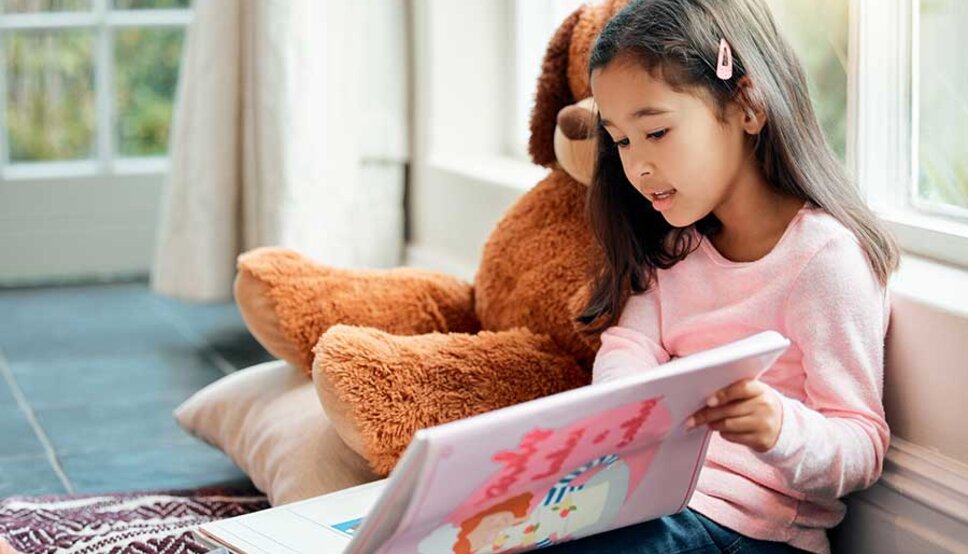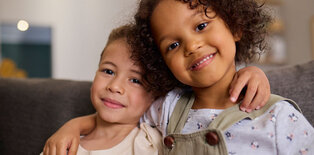Creating a Calming Corner: A Simple Way to Help Kids Feel Better

More and more children are dealing with strong emotions like stress, sadness, and anger. In fact, about one in five children have a mental health challenge. Many kids feel overwhelmed and don’t know how to handle their feelings. This can make it hard to learn, make friends, or feel good about themselves.
Schools, homes, and communities can help by creating Calming Corners—small, safe spaces where kids can calm down, think, and feel better. These spaces don’t replace professional help, but they give children a chance to take a break and return to their day feeling more in control.
What is a calming corner?
A calming corner is a quiet place in a room with soft seating and calming tools. Kids can use the space to cool off when they feel upset or overwhelmed. The space usually includes soft space to sit like a bean bag, pillow, or small chair. You can get creative with what you use. Throw a few old stuffed animals into a pillowcase and voila! A stress ball or fidget toy can be a great tool to include and help a child self-soothe. Posters or books which provide age-appropriate breathing exercises, such as box breathing or rainbow breathing, can serve as a helpful reminder for the child of what to do in the space. Calming books or coloring sheets can also be a great tool to include for all ages. When used appropriately, this area can help kids reset their emotions and get back to learning or playing.
Why calming corners matter
In the past, children who struggled with their emotions were often sent to time-out or suspended. However, research now shows that punishment doesn’t teach the skills kids need to manage their feelings. Instead, children need a safe space and strategies to calm down and reset or practice how to calm down. When children have access to these tools, they experience less stress, fewer emotional outbursts, and are able to return to learning more quickly. Calming corners also help children build lifelong skills such as self-control, understanding feelings, and problem-solving.
5 simple steps to create a calming corner
You don’t need a big budget or fancy materials. A calming corner can be simple, quiet, and comfortable.
1. Choose a good spot
Find a quiet area that isn’t too bright, loud, or busy.
Tip: It doesn’t have to be located in a real corner.
2. Add comfortable seating
Use a beanbag, soft chair, or large floor pillows.
Tip: Make sure items are easy to clean.
3. Pick a few calming tools
- Fidget toys, stress balls, small puzzles. DIY glitter bottles are not only a great tool, but make for a fun activity.
- Noise-canceling headphones can help reduce some of the sensory overload kids may be experiencing.
- Breathing charts, emotion charts or books about feelings or mindfulness.
Tip: Too many items can feel overwhelming. Start small and swap items out over time.
4. Set clear rules and expectations unique to your individualized space
Here are some expectations to consider:
- Use the space for calming down, not playing.
- Only one child in the calming corner at a time.
Post simple instructions so kids can remember how to use the space on their own. Pictures or charts can help kids remember what to do.
5. Teach kids how to use it
If you do not teach children how to use the space and the items in the space, then the items become “just stuff” in a corner. When we teach the child to use the calming corner, it becomes a tool.
- Talk and teach about the space before the child actually needs it.
- Practice using it during calm times. It’s tough to learn any new skills when you are having a hard time.
- Remind children it’s not a punishment—it’s a tool to feel better.
Calming corners are a simple and powerful way to help kids deal with their feelings. When used the right way, these small spaces teach big skills—like self-control, empathy, and problem-solving. They help children feel safe, supported, and ready to succeed.
Whether you’re in a school, home, or community center, creating a calming space is a smart step toward helping all children grow, learn, and thrive.
In case you need additional support navigating your child’s mental health journey, Bradley Hospital has many programs and resources that can help. Learn more about our outpatient children's mental services at Bradley Hospital.
About the Author:
Alicia Ead, LICSW
Alicia Ead, LICSW, is the supervisor of school-based services for Bradley Hospital.
Find a Doctor

The right provider is in our network
Search more than 1,200 providers in our network.



